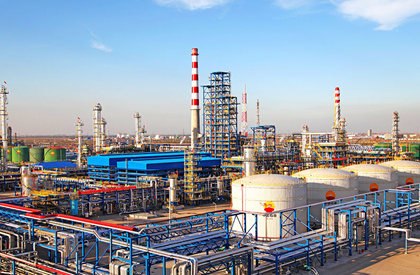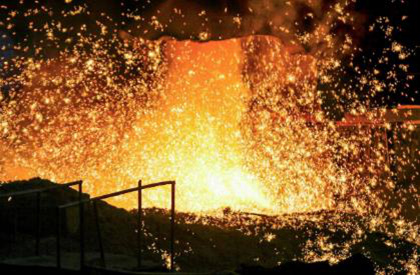03
2023-07
The structural properties of boron oxide are briefly described
source:
The glassy boron oxide (g-B2O3) is probably a network structure composed of many triangular BO3 units connected by a shared oxygen atom, in which the 6-membered boron-oxygen interphase ring B3O3 dominates. In the six-membered ring, the boron atom is a triple coordination and the oxygen atom is a dicoordination. The vitreous body softens at 325-450 °C and its density varies in a range depending on heat exposure. When heating, the disorder in vitreous boron oxide structure increases. Above 450 °C a sexual -B=O group is produced. Above 1000 °C, boron oxide vapor is composed of B2O3 monomer, whose structure is angular O=B-O-B=O.
Under atmospheric pressure, the liquid boron oxide crystallizes in the range of 200-250 °C, which can form the ordinary hexagonal boron oxide (α-B2O3), whose structure is almost composed of triangular BO3 units.
At 22000atm and 400 °C, α-B2O3 transforms into the high-temperature and high-pressure monoclinic crystal β-B2O3. The transformation process is similar to the conversion of quartz to coxite under high pressure. In addition, β-B2O3 can also be obtained by crystallization of liquid boron oxide at 40000atm and 600 °C.
β-B2O3 has a large bulk modulus (K = 180 GPa). The Vickers hardness of g-B2O3 and β-B2O3 is 1.5GPa and 16GPa, respectively.
Under atmospheric pressure, the liquid boron oxide crystallizes in the range of 200-250 °C, which can form the ordinary hexagonal boron oxide (α-B2O3), whose structure is almost composed of triangular BO3 units.
At 22000atm and 400 °C, α-B2O3 transforms into the high-temperature and high-pressure monoclinic crystal β-B2O3. The transformation process is similar to the conversion of quartz to coxite under high pressure. In addition, β-B2O3 can also be obtained by crystallization of liquid boron oxide at 40000atm and 600 °C.
β-B2O3 has a large bulk modulus (K = 180 GPa). The Vickers hardness of g-B2O3 and β-B2O3 is 1.5GPa and 16GPa, respectively.
Recommended news
-
What are the uses of boron oxi...
Boron oxide use 1, silicate analysis in the determination of silica and alkali, blow pipe analysis, decomposition o......
-
What are the advantages of bor...
1. Effects of water: Boric acid is the hydrate of boron trioxide, and its molecular formula is H3BO3, which can be expr......




